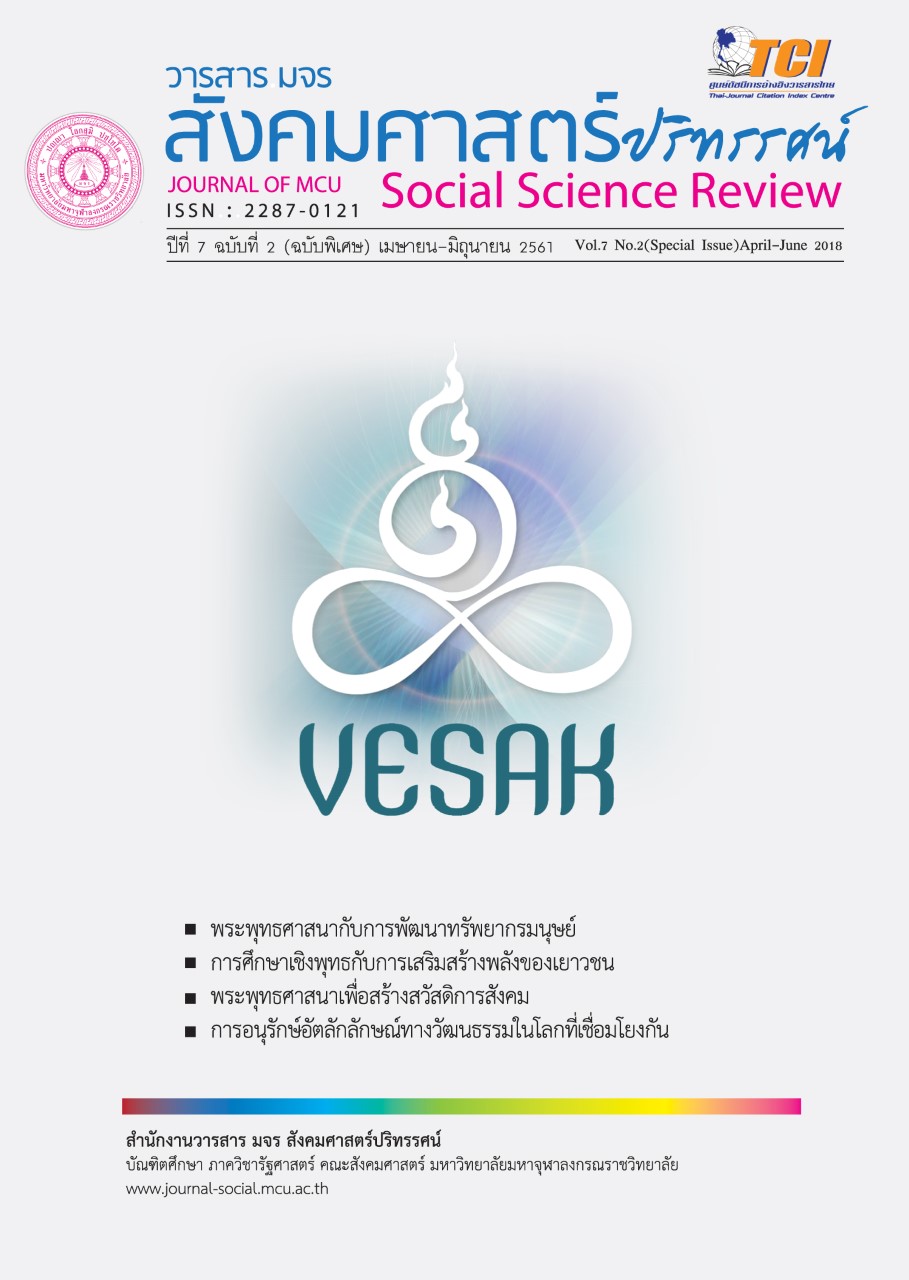STRATEGIC FOR POTENTIAL DEVELOPMENT OF SANGHA TO CREATE RECONCILIATION IN COMMUNITY
คำสำคัญ:
potential development, reconciliation, communityบทคัดย่อ
Refer to the Buddhist college that had be supported education for the monks who were students. The part of education for course outline was find out students’ potential in their activities after their were finished course outline of Bachelor degree according to university regulation that gave precedence to monks roles as the abbot in Thai community that be supported to create reconciliation in there. As the reason the researcher was interested in the Strategic for potential development of sangha to create reconciliation in community by integration between Buddhism and modern science for conflict management. The researcher’s intention was created the model for this issue to support potential of the monks as students who were volunteers in Nakornlampang Buddhist college. The objectives of this study were 1) to study the potential of sangha roles in community 2) to study the concepts , theory of the potential of sangha roles in community 3 ) to create the model of Strategic for potential development of sangha to create reconciliation in community.
The research used the mixed method research study saples consisting of Qualitative Research and Quantitative Research. The samplings in Qualitative Research were specialists such as academician , community leader , community developer and the monks who were learnt in final year total 18 persons and Quantitative Research were 255 questionairs from people in Tambon Nayang , AmphurSobprab , Lampang province that were selcted by Taro Yamane formula . The research findings were as follows: 1) The potential in sangha roles and reconciliation in community under the conceptual that Buddhism and the monks are the main factors for develop Thai people quality of life, Buddhist propagation drive Thai social to be happiness and sustainable. 2) The concepts , theory of the potential of sangha roles in community found that the practice level of reconciliation in community at love and unity aspect were at the high level ( =3.08, S.D.= 0.751) , the respect in people were at the high level ( =3.06, S.D.= 0.728), the sacrifice were at the high level ( =3.17, S.D.= 0.729) , and the service mind were at the high level ( =3.03, S.D.= 0.787). 3) The model of Strategic for potential development of sangha to create reconciliation in community was build universal characteristic and potential such as learning to know for education to potential development as a continue issue and long life learning., In the additional Learning to do for improve capability to apply the knowledge to the practice in the art of living with others , team building , human relation skill , management skill , ethics and merit. The present education should be create the education course with above items that could be supported the monks to build the reconciliation in community
เอกสารอ้างอิง
B. Leas, Speed. (1984 ) .Choosing a Conflict Management Strategy”. In Discover Your Conflict Management Style.ed. Speed B. Leas. New York: The Alban Institute,.
CennethW.Thomas and Kilman Ralph H.(1974) .Thomas-KilmanConfict Mode Instrument, Woods Road, Tuxedo, NY 10987: XICOM.
Mills, C. Wright. (1956).The Power Elite.New York: Oxford University Press.
Mongtague, Ashley. (1968).Man and Aggression. New York: Oxford University Press.
Moor, Christoper. ( 1996).The Mediation Process: Practical Strategic for Resolving Conflict.2nd ed. San Fracisco, C.A: Jossey-Bass Publishers.
W. Mack, Reymond and Pcase, John. (1973). Sociology and Social Life.New York: D Van Nostrand Company.
Robbins, S. P. (1991). Organization Behavior Concepts: Controversies and Application,2nd ed. Englewood Cliffs, New Jersey: Prentice-Hall.
ดาวน์โหลด
รูปแบบการอ้างอิง
ฉบับ
ประเภทบทความ
สัญญาอนุญาต
ลิขสิทธิ์ (c) 2020 วารสาร มจร สังคมศาสตร์ปริทรรศน์

อนุญาตภายใต้เงื่อนไข Creative Commons Attribution-NonCommercial-NoDerivatives 4.0 International License.
เพื่อให้เป็นไปตามกฎหมายลิขสิทธิ์ ผู้นิพนธ์ทุกท่านต้องลงลายมือชื่อในแบบฟอร์มใบมอบลิขสิทธิ์บทความให้แก่วารสารฯ พร้อมกับบทความต้นฉบับที่ได้แก้ไขครั้งสุดท้าย นอกจากนี้ ผู้นิพนธ์ทุกท่านต้องยืนยันว่าบทความต้นฉบับที่ส่งมาตีพิมพ์นั้น ได้ส่งมาตีพิมพ์เฉพาะในวารสาร มจร สังคมศาสตร์ปริทรรศน์ เพียงแห่งเดียวเท่านั้น หากมีการใช้ภาพหรือตารางหรือเนื้อหาอื่นๆ ของผู้นิพนธ์อื่นที่ปรากฏในสิ่งตีพิมพ์อื่นมาแล้ว ผู้นิพนธ์ต้องขออนุญาตเจ้าของลิขสิทธิ์ก่อน พร้อมทั้งแสดงหนังสือที่ได้รับการยินยอมต่อบรรณาธิการ ก่อนที่บทความจะได้รับการตีพิมพ์ หากไม่เป็นไปตามข้อกำหนดเบื้องต้น ทางวารสารจะถอดบทความของท่านออกโดยไม่มีข้อยกเว้นใดๆ ทั้งสิ้น





